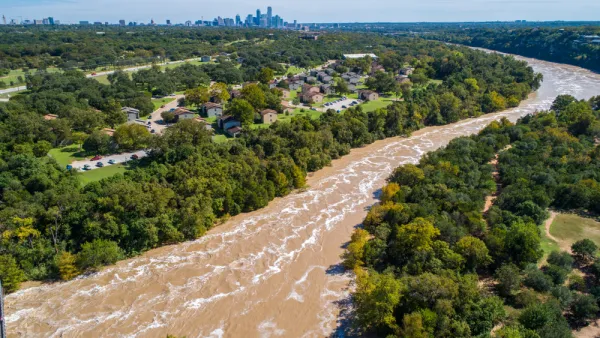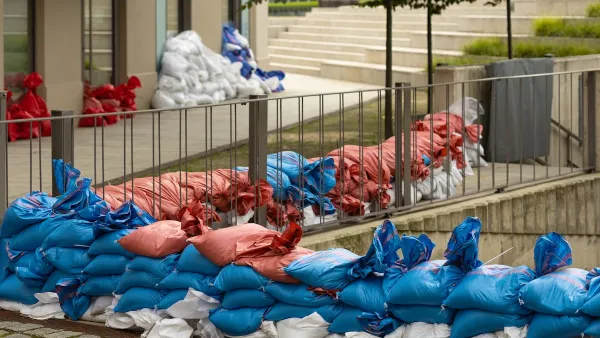Infrastructure built to mitigate flooding a century ago no longer serves current needs.

A new study from the University of Michigan reveals that stormwater infrastructure in many U.S. cities actually exacerbates flooding due to outdated designs that are no longer effective during extreme weather events, reports Jim Lynch for Tech Xplore.
The problem lies in traditional planning's failure to recognize flood connectivity: how surface runoff from driveways, lawns and streets—and the flows in river channels and pipes—are all interlinked. The result is interactions, often unanticipated, between different stormwater systems that can make flooding worse.
The study used data from flooding in Metro Detroit in 2014, when record-breaking rainfall caused $1.8 billion in damage. According to Vinh Tran, U-M assistant research scientist in civil and environmental engineering and co-first author of the study, “Current flood mapping practices are indicative of outdated thinking that needs to change.” Policy recommendations based on that data include:
- “Stormwater system designs should take a holistic, systemwide approach to flood mitigation, rather than the conventional approach focused on local solutions.”
- “Design guidelines for stormwater systems should be revised to consider connectivity in urban landscapes, including flows in subsurface infrastructure such as pipes and sewers, open channel flows such as rivers and streams, and overland flows over natural and built surfaces.”
- “Advanced computer models that represent the full spectrum of stormwater elements and the behavior of water in them should be mandated.”
FULL STORY: Traditional infrastructure design often makes extreme flooding events worse, researchers find

National Parks Layoffs Will Cause Communities to Lose Billions
Thousands of essential park workers were laid off this week, just before the busy spring break season.

Retro-silient?: America’s First “Eco-burb,” The Woodlands Turns 50
A master-planned community north of Houston offers lessons on green infrastructure and resilient design, but falls short of its founder’s lofty affordability and walkability goals.

Delivering for America Plan Will Downgrade Mail Service in at Least 49.5 Percent of Zip Codes
Republican and Democrat lawmakers criticize the plan for its disproportionate negative impact on rural communities.

Test News Post 1
This is a summary

Test News Headline 46
Test for the image on the front page.

Balancing Bombs and Butterflies: How the National Guard Protects a Rare Species
The National Guard at Fort Indiantown Gap uses GIS technology and land management strategies to balance military training with conservation efforts, ensuring the survival of the rare eastern regal fritillary butterfly.
Urban Design for Planners 1: Software Tools
This six-course series explores essential urban design concepts using open source software and equips planners with the tools they need to participate fully in the urban design process.
Planning for Universal Design
Learn the tools for implementing Universal Design in planning regulations.
EMC Planning Group, Inc.
Planetizen
Planetizen
Mpact (formerly Rail~Volution)
Great Falls Development Authority, Inc.
HUDs Office of Policy Development and Research
NYU Wagner Graduate School of Public Service





























